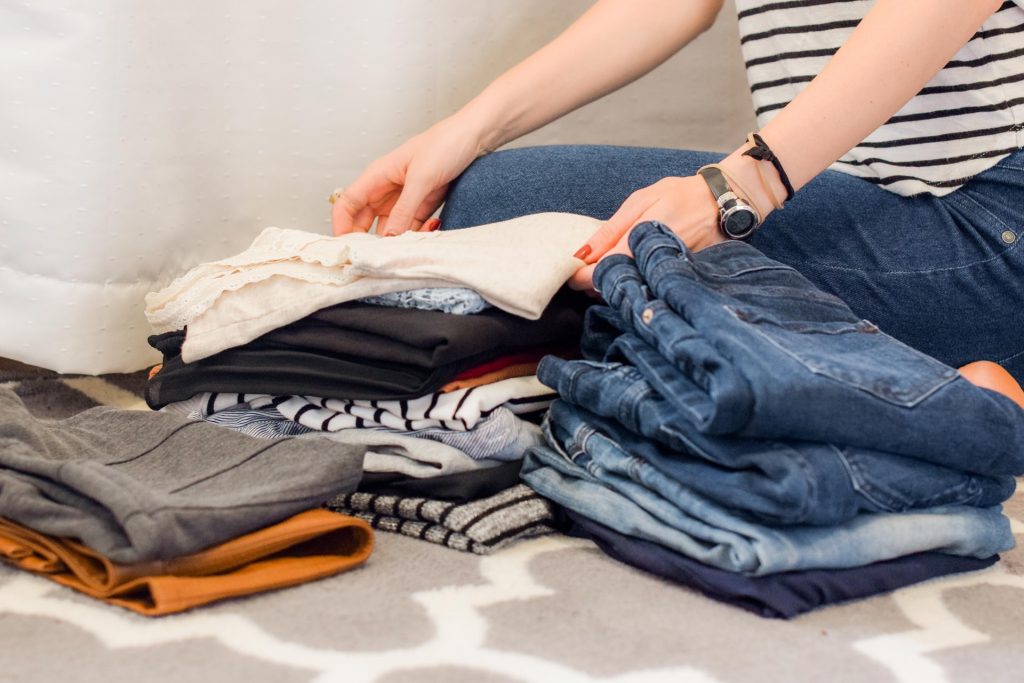
Tired of a messy closet? It’s time to take some advice from the professionals on organizing your clothing. Beat the hard-to-maintain methods you were taught growing up and check out these 6 unique clothing organization methods. Let’s start with the big things.
Seasonal Clothing
Let’s talk about one of the biggest pains in the clothing organization world: seasonal clothing. Whether you’re dealing with ten sundresses that take up space during ten months of the year or bulky parkas that you only use in January, there’s a solution for you.
One of the best clothing organization methods of storing seasonal clothing is tired and true: Vacuum sealing. Large jackets with a lot of insulation take up significantly more room than they really need to. Folding them up and packing them into a vacuum sealed storage bag can shrink them down to a tenth of their original size.
Did you think vacuum sealing was only for large items? Think again! Not only do smaller pieces of clothing waste space to a smaller degree, vacuum sealing helps protect clothing from dust, bugs, and other pests.
Pack all of your seasonal clothes into a few vacuum sealed storage bags and tuck them into a drawer or onto a top shelf in the closet.
Shirts and Pants
Since most of us were small, we’ve been taught one of two simple clothing organization methods for pants and shirts. Fold them in half where they’re symmetrical and then again the other way. Then, stack them in your drawers. This method is all wrong! While it’s simple to do quickly, you pay for it with the immediate mess it causes. The only way to find the shirt you’re looking for is to lift up the top shirts and peak underneath them. Repeatedly doing this on the daily is both annoying and leads to a disheveled drawer.
Pants are a bit more compact, so folding them this way frequently leaves big gaps on either side of your stack while the stack sits too tall for the drawer. There’s a better way.
Popularized by Marie Kondo, the best way to store your shirts and pants is by placing them upright. Nothing should be under something else. When stored upright, clothes become like books with the spines facing outward. You can see exactly what you have and find what you’re looking for.
Start by hanging all of the shirts you want to keep wrinkle free or that you use extremely often. The shirts left – perhaps casual t-shirts – should be folded in thirds the long way and then in quarters the other. This will leave you with a small square of shirt. If you plan ahead, you can make sure any recognizable parts of the shirt are visible on the outside. This will make finding your shirts easy. Plus, when you do this with pants, it makes using up all of the drawer space without overtaking the height of the drawer much easier.
Dresses and Suits
Storing dresses and suits can be really tricky. On one hand, you don’t want to wrinkle them if you may be wearing them soon. On the other, if you have many options, you may be running low on space.
To start, make the suits and dresses you need hung up easy to store. If you don’t have a hanger that accommodates each part of a suit, they’re easy to find online. Being able to keep all pieces of a suit hung up and in one place is a huge time saver.
Dresses should always be stored on padded hangers. Their typically delicate straps or sleeves are not meant to withstand pulling and stretching. Plastic or metal hangers – especially ones with built in hooks along the top – can do a number on expensive fabric.
If you don’t plan on wearing a dress for a long time or only for a super special occasion, storing it in a vacuum sealed bag might be the solution. Many people avoid folding dresses, but unless the fabric of the dress is specifically not meant to be folded, it doesn’t hurt. The biggest reason why people don’t fold dresses is that it wrinkles them and they’re hard to contain. If you use a vacuum sealed storage bag, containment is no big deal. When it’s time to wear your dress again, a little bit of steam will take out any wrinkles from storage.

